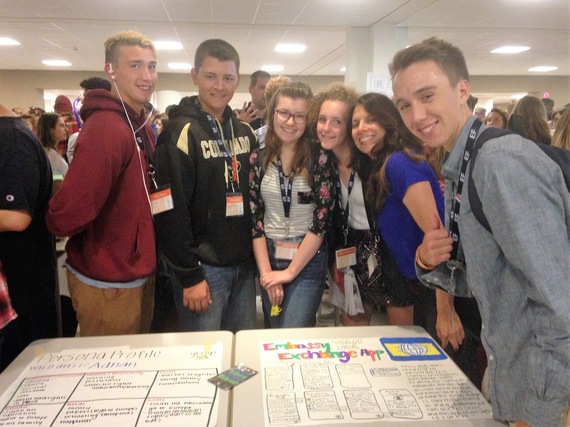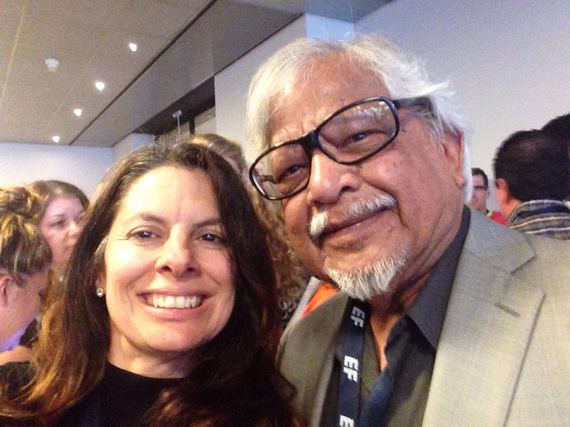By Leticia Guzman Ingram
2016 Colorado State Teacher of the Year
Basalt High School, Basalt Colorado
Teachers constantly hear how American's education system is broken and not performing at the same level as other countries in the world. I recently returned from a trip to Finland so I could better understand why its students are performing at such a high level and what we could learn from them to improve our own schools. This trip was organized through a collaboration between the Council of Chief State School Officers (CCSSO), which runs the National Teacher of the Year Program, and EF Education First. While in Finland, I had opportunities to visit schools and converse with many educators. I experienced different aspects of the Finnish culture and learned about the supports that exist for educators in their country. Here are a few key takeaways from Finland that inspired me while also making me feel proud about the things we're doing right here in the U.S.
Valued Educators
The teacher education program is top notch in Finland and very competitive for high schools students interested in entering a university teacher education program. As I questioned different Finnish educators about their teacher's program - I was surprised to find out how hard it was to become a teacher. Only the top 10 percent of graduating high school students can be considered a candidate for Finland's teacher education program. Students must also complete a written exam on educational pedagogy and only the top candidates from that exam are interviewed and then chosen for acceptance into a rigorous five year education program where they not only complete a bachelors but also a masters. You can see why teachers are valued in this country and given autonomy, trust, and respect.
Teachers in Finland are trusted to do what they're best at - teach! There are no standardized tests to hold schools and teachers accountable for the work that they do. Educators in Finland are more focused on their students' experiencing love of learning than they are in the measurement of achievement. Sometimes I find myself so focused on standardized tests that I forget about the joy I want students to feel when they are learning. I want my students to love learning not so because they may get a high score, but because they thirst of more knowledge for themselves.
Less is More
We heard this mantra of less is more again and again. I was amazed as I looked around the Finnish classrooms I visited and didn't see any technology in the Finnish schools we visited. There were no smartboards, computer labs, or any other shiny gadgets anywhere. Educators in Finland focus more on critical thinking and students are not so quick to "Google" the answers. In the past, I have worried that I did not have enough technology in my classroom, but this trip I was reminded that should not be my top concern. Rather than using technology, the Fins are focused on learning through play.
Diversity is Our Strength
It is truly hard to compare the Finnish Education System with the United States because of the constant changing demographics that we are experiencing in our country. Finland is 90 percent homogenous, 90 percent of the population speaks the same language, 90 percent people follow the same religion. In the United States, our classrooms are full of many different languages, skin colors, religions, and cultures. In my little school, 58 percent of the student body speaks English as a second language. I am not suggesting that we use our diversity as an excuse for not achieving at the same level as Finland, but we must accept it as one of our greatest challenges to view our diversity as a gift that we can leverage to educate all our students to a very high level.
I am very proud to be a United States teacher knowing that many students from all over the world desire the opportunity to be educated in American schools. We value the diversity that our classrooms represent and know this is what the real world looks like. Even Finland will not stay homogenous forever.
Each year at Basalt High School, we host a Thanksgiving Dinner for all the English Language Learners and their families. Around 350 family members and students attend the dinner to help them sense and understand what the cultural implications of the Thanksgiving tradition are all about in our country. It is a very emotional evening watching all these newcomers eating together sharing full plates of the traditional servings of turkey, mashed potatoes, dressing, cranberry sauce and, of course, pumpkin pie. What started out as a small project has resulted in an an entire community coming together to celebrate one of America's most important traditions with people from a diverse range of backgrounds.
What Can Finland Learn From Us?
On the last day of my trip, a Finnish administrator asked me for advice on how we are educating immigrants coming from other countries. He said the demographics in Finland were changing and he knew in time, they would be coming to us seeking advice. That really struck me. I strongly believe that we always become stronger collaborating and working hand in hand together. I came away so impressed with the Finnish school system and was even more impressed that day to see the humility they demonstrated by realizing they need to learn from us too.
Finnish schools are one of the top school systems in the world because they know that they do not have all the answers and are constantly looking for ways to support their students. Education is not only about learning the academics but also about embracing one another - country from country.


